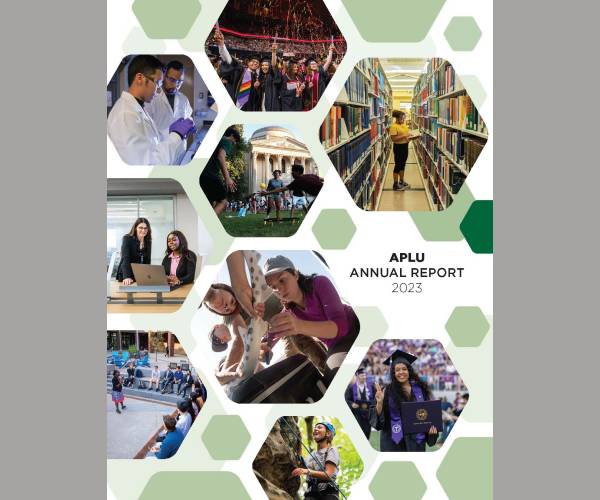Key Takeaways
- More than four in ten students at public four-year universities complete their degree with zero debt.
- Nearly eight in ten students graduate with less than $30,000 in debt.
- Among those who do borrow, the average debt at graduation is $27,400 — or $6,850 for each year of a four-year degree at a public university.
- Recent college graduates earn $24,000 more annually than peers of the same age whose highest degree is a high school diploma.

The vast majority of four-year public university graduates complete their undergraduate degree with a relatively modest and manageable amount of student debt. About half of students at four-year public universities finished their bachelor’s degree* without any debt and 78 percent graduated with less than $30,000 in debt. Only 4 percent of public university graduates left with more than $60,000. And those with over $100,000 in debt are rarer still: they are anomalies representing half of 1 percent of all four-year public university undergraduates completing their degrees.1
Student Debt in Perspective

Student loans help pay for tuition and fees, as well as room and board and other educational costs like textbooks. Among those who borrow, the average debt at graduation is $27,400 — or $6,850 for each year of a four-year degree at a public university.1 Among all public university graduates, including those who didn’t borrow, the average debt at graduation is $16,300.2 To put that amount of debt in perspective, consider that median annual earnings for bachelor’s degree holders are $36,000 or 84 percent higher than those whose highest degree is a high school diploma.2 Bachelor’s degree holders make $1.2 million in additional earnings over their lifetime.”3
What’s more, the share of student-loan borrowers’ income going to debt payments has stayed about the same or even declined over the past two decades.4 Although 45 percent of undergraduate students at public four-year universities graduate without any debt, a student graduating with the average amount of debt among borrowers would have a student debt payment of $275 a month.5 In recent years, most students with federal loans became eligible to enter an income-driven repayment plan for federal loans. Under such plans, students typically limit student-loan payments to 10 percent of their discretionary income.
In recent years, some have claimed that student debt prevents graduates from becoming homeowners. But examining the data, the White House Council of Economic Advisors concluded that attending college makes individuals more, not less, likely to own a home. “By age 26, households with student debt are more likely to buy a house than those that did not attend college,” the White House report found. “By age 34, college attendees with and without student debt are equally likely to buy a home, and both much more likely than those without a college education.”6
Total Student Debt

Some have also raised concerns that the nation’s total student debt balance, which includes graduate student debt, now stands at $1.73 trillion.7 It is true that total student debt has increased over the past two decades. Yet this increase is due in part to swelling enrollment at the nation’s universities. And although 13 percent of Americans hold graduate degrees, 57 percent of all debt is owed by households with a graduate degree.8 Students in these programs take on more debt as they pursue a career in a field that pays significantly more. On average, workers with advanced degrees earn $58,000 more annually than those with only a high school degree.2
1. College Board, Trends in College Pricing and Student Aid, 2023.
2. U.S. Department of Education, National Center for Education Statistics, 2015–16 National Postsecondary Student Aid Study.
3. U.S. Bureau of Labor Statistics, Quartiles and Selected Deciles of Usual Weekly Earnings by Educational Attainment, 2022.
4. Abel and Deitz, “Despite Rising Costs, College Is Still a Good Investment,” Federal Reserve Bank of New York, 2019.
4. Akers & Chingo, “Is a Student Debt Crisis on the Horizon?” 2014.
5. Sallie May Student Loan Repayment Estimator, $25,921 in debt, interest rate of 4.99% (rate for direct federal loans in 2022 is 4.99%), repayment period 10 years.
6. White House Council of Economic Advisors, Investing in Higher Education: Benefits, Challenges, and the State of Student Debt, July 2016.
7. Federal Reserve Bank Board of Governors. Consumer Credit Outstanding (Levels)
8. Looney, Adam. Testimony before the U.S. Senate Committee on Banking, Housing, and Urban Affairs’ Subcommittee on Economic Policy, 2021.
*Debt figures include graduates and those expected to graduate





Stay Connected
X (formerly Twitter)
Facebook
YouTube
LinkedIn
RSS